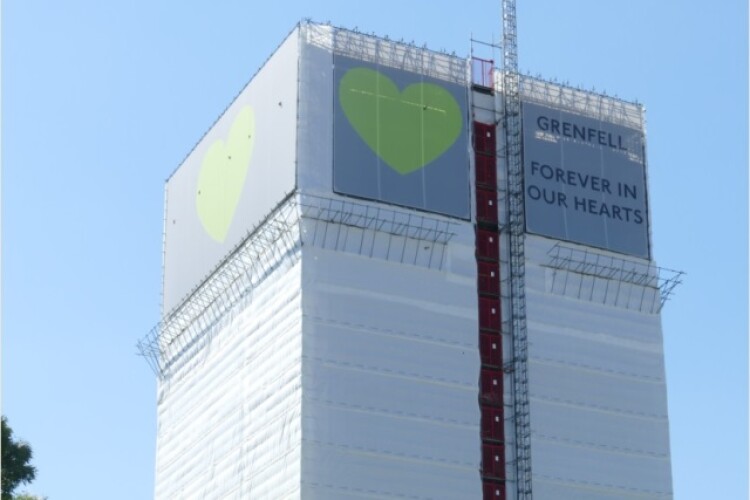The Grenfell Inquiry found that Arconic concealed the extent of the risk its Reynobond 55 PE cladding panels presented, Celotex misrepresented claims to a specialist cladding subcontractor, Harley, about its products such as the RS5000 insulation within the cladding it made, and Kingspan misled the market about its K15 insulation, comprising 5% of the insulation used at Grenfell. Kingspan has been more forthcoming about its liability and exposure, and recently is said to have been one of nine parties that settled an undisclosed sum, in a £70m claim that Shepherd brought at a separate mixed-use project in Colindale. That claim was brought under the Building Safety Act 2022, which has been on the statute books since 28th June 2022 and was introduced to tackle these issues relating to building safety risks.
Leaseholders who had huge bills to pay for rectification costs now have rights under Schedule 8 of the Act, and parties have claims to pursue under the Act as well as extended limitation periods. There is also historic exposure to pay back the Building Safety Fund where recoveries can be made. One such right is the ability to make claims under Sections 147-151 of the Act for liability relating to construction products, and in particular for cladding products. This includes where misleading statements are held to have been made, which the inquiry has shown. We expect to see a big uptick in these types of claims now being pursued both for redress and a way for the participants in a supply chain to mitigate their own exposure.
The inquiry report criticises many parties to the refurbishment supply chain of Grenfell, manufacturers, accreditation bodies, and the manner in which Building Regulations have evolved, which has ultimately enabled fire safety standards to be interpreted more subjectively than planned. Schedule 11 of the Building Safety Act 2022 is supposed to mean the general safety requirement will create tighter standards for product manufacturers in particular. Designers have duties to design buildings safely and constructors owe a similar duty to ensure buildings are constructed safely, particularly for dwellings under Section 1 of the Defective Premises Act 1972. Building owners, operators and accountable persons must ensure buildings are operated in a safe way. The Golden Thread of Information arising from the Building Safety Act 2022 plans to ensure the safety requirements flow down the supply chain, but the inquiry shows how difficult that can be to enforce in practice with competing contractual standards and responsibilities and frequent misunderstandings. The new licensing system envisaged may increase greater understanding of obligations and standards alike, but the same risks will apply. More often than not, one party will shirk a responsibility out of fear any positive act can cut across more limited obligations, especially where others can be identified to pick up responsibility for the same risk.
A National Regulator for Construction Products within the Health & Safety Executive / Building Safety Regulator is supposed to oversee effective construction products, which goes to the heart of establishing safer products than filtering knowledge through supply chains. Both need to be tackled to ensure the findings of the inquiry do not fall on deaf ears. It remains to be seen how far-reaching the “Construction Regulator”, as the inquiry recommends creating, can be with respect to establishing, maintaining and protecting new standards, while ensuring those standards are adopted contractually. The urgent review of Approved Document B is nothing new, with cases frequently including different interpretations of not only the guidance itself, but which version applies, depending on the one in force at the time of construction and / or practical completion. Even before the inquiry produced its final report, changes to Approved Document B were on the cards with the introduction of new provisions for sprinklers in care homes in March 2025 and more than one common staircase in new blocks of flats above 18 meters from September 2026. The removal of national classes of fire resistance testing standards under BS 476 does not come into force until September 2029, leaving the European Standard (BS EN 13501 series). We have seen many times participants not understanding from where the ‘EN’ derives, epitomising the inquiry’s recommendation to instil greater knowledge within industry. The mechanisms to measure fire resistance of construction products has to be streamlined for these changes to have any real effect.

It is reported that only approximately 30% of high-rise buildings earmarked for remediation have been addressed with a suitable scheme of remedial works. The Building Safety Fund and Cladding Safety Scheme requires FRAEWs being carried out to the PAS9980:2022 guidance and there remains a competency issue in the industry to identify and instruct a limited pool of qualified fire engineers to ascertain the key elements of a building which must be remedied and those who can devise suitable remedial schemes. Indeed, the inquiry found the fire engineering profession should be recognised and directed by legislation with an independent regulator established, which will be a key space to watch (and hopefully not too late). This was a key issue in the Martlet Homes Ltd v Mulalley & Co Ltd [2022] EWHC 1813 (TCC) case, pre-dating the inception of the Building Safety Act 2022. The same practical challenges remain. Greater use must be made of recovery actions where grant funding agreements stipulate obligations to pursue those who are responsible where possible, as Redrow was particularly alive to in its recent judicial review challenge against the secretary of state.
Above all, if the inquiry has determined parties in the supply chain did not have enough understanding of their contractual, common law and statutory duties, and compliance statements under the Building Safety Act 2022 is viewed as the cure because of the statutory obligation it creates, surely more is required to instil a greater understanding of standards across the industry and how to flow those down not only contractual frameworks, but the minds of those actually carrying out the design and construction of all buildings. The Grenfell fire was predicted seven months before it happened by a resident who later founded the Grenfell Action Group and survived the blaze on the 16th floor, warning that only a ‘catastrophic event’ would wake up stakeholders. The inquiry should be the starting, not end, point for that message to now be implemented.
The criminal investigation also continues. It has been reported that more than 180 police officers are investigating 58 suspected individuals and 19 companies, with potential charges including corporate manslaughter, gross negligence manslaughter, fraud, misconduct in public office and perverting the course of justice. At least 56 individuals have been interviewed under caution by the Metropolitan Police so far. However, the Met has said that it will be a further 12 to 18 months before any charges will be brought, as they now must consider the report line by line, ahead of presenting files to the Crown Prosecution Service for review. During this intervening period, those individuals and companies singled out for criticism in the report, will have to consider when and by what means they choose to publicly reply (some having already chosen to do so) and no doubt will be seeking appropriate legal advice.
- About the authors: Alex Delin is a partner in the construction & engineering team at Irwin Mitchell; Philip Somarakis is the firm’s national head of regulatory
Got a story? Email news@theconstructionindex.co.uk



